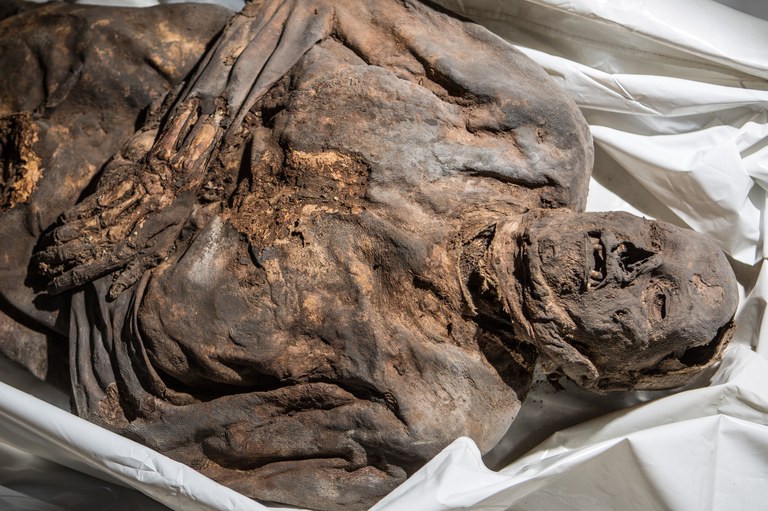17th Century Variola Virus Reveals the Recent History of Smallpox
The partially mummified remains of a young child have offered a unique insight into the history of a once-feared disease. The remains, recovered from the crypt of the Dominican Church of the Holy Spirit in Vilnius, Lithuania, have been dated to the mid-17th century.
Dec 08, 2016
The partially mummified remains of a young child have offered a unique insight into the history of a once-feared disease. The remains, recovered from the crypt of the Dominican Church of the Holy Spirit in Vilnius, Lithuania, have been dated to the mid-17th century. Despite no visual sign of disease, the mummy yielded a complete genome for variola (major) virus, indicating the presence of a smallpox infection. This 17th century variola strain was found to be ancestral to all known 20th century strains (dating from approximately the end of WWII to the time of smallpox eradication in the late 1970s) which suggests that smallpox is a much more recent infection in humans than previously presumed. Additionally, a reconstruction of the evolutionary history of variola virus hints that the split between the more virulent variola major and the less virulent variola minor forms may have occurred in response to evolutionary pressure by the advent of vaccination in 1796.
Article Title: 17th Century Variola Virus Reveals the Recent History of Smallpox
Authors: Ana T. Duggan, Maria F. Perdomo, Dario Piombino-Mascali, Stephanie Marciniak, Debi Poinar, Matthew V. Emery, Jan P. Buchmann, Sebastian Duchêne, Rimantas Jankauskas, Margaret Humphreys, G. Brian Golding, John Southon, Alison Devault, Jean-Marie Rouillard, Jason W. Sahl, Olivier Dutour, Klaus Hedman, Antti Sajantila, Geoffrey L. Smith, Edward C. Holmes, and Hendrik N. Poinar
Curr. Biol., Vol. 26, Dec. 2016, DOI: 10.1016/j.cub.2016.10.061
Abstract
Smallpox holds a unique position in the history of medicine. It was the first disease for which a vaccine was developed and remains the only human disease eradicated by vaccination. Although there have been claims of smallpox in Egypt, India, and China dating back millennia, the timescale of emergence of the causative agent, variola virus (VARV), and how it evolved in the context of increasingly widespread immunization, have proven controversial . In particular, some molecular-clock-based studies have suggested that key events in VARV evolution only occurred during the last two centuries and hence in apparent conflict with anecdotal historical reports, although it is difficult to distinguish smallpox from other pustular rashes by description alone. To address these issues, we captured, sequenced, and reconstructed a draft genome of an ancient strain of VARV, sampled from a Lithuanian child mummy dating between 1643 and 1665 and close to the time of several documented European epidemics. When compared to vaccinia virus, this archival strain contained the same pattern of gene degradation as 20th century VARVs, indicating that such loss of gene function had occurred before ca. 1650. Strikingly, the mummy sequence fell basal to all currently sequenced strains of VARV on phylogenetic trees. Molecular-clock analyses revealed a strong clock-like structure and that the timescale of smallpox evolution is more recent than often supposed, with the diversification of major viral lineages only occurring within the 18th and 19th centuries, concomitant with the development of modern vaccination.
Link to Current Biology Article
Surrounding Press Stories:
Link to CNN Article
Link to ScienceNews Article
Link to Science Magazine Article
Link to National Geographic Article
Link to NPR Article
Link to GenomeWeb Article
NPR All Things Considered Interview

Crypt of the Dominican Church of the Holy Spirit (Vilnius, Lithuania).

One of the mummies found within the crypt, not examined in this study.